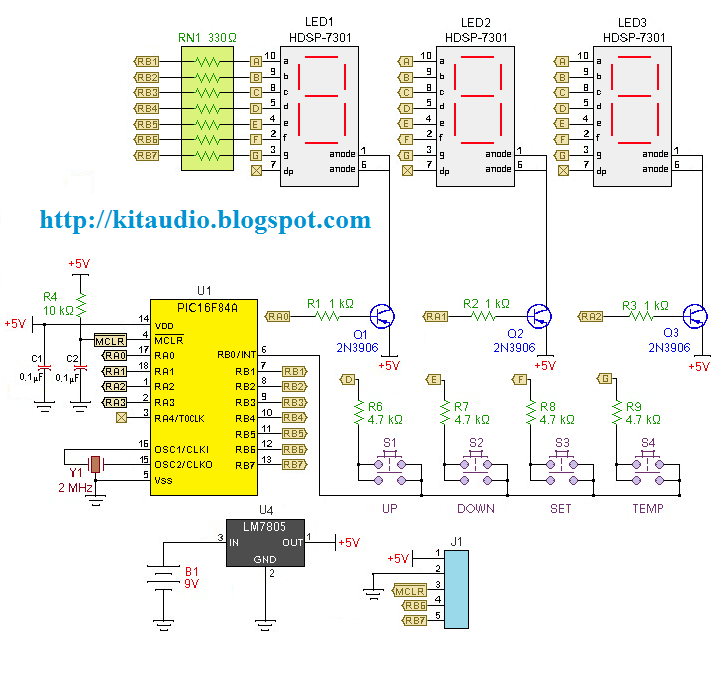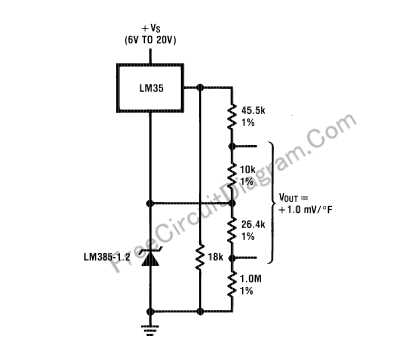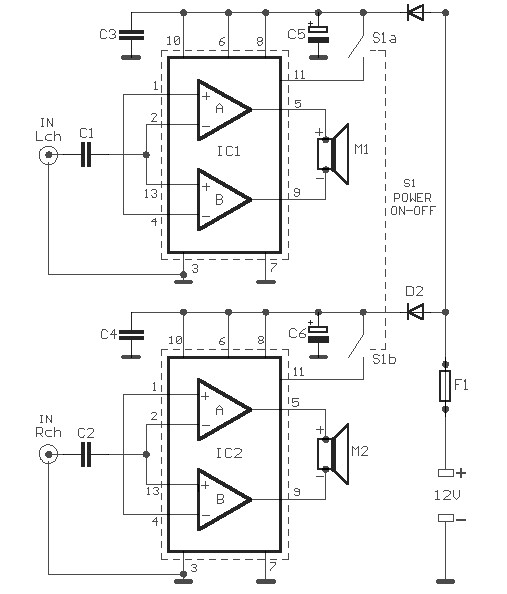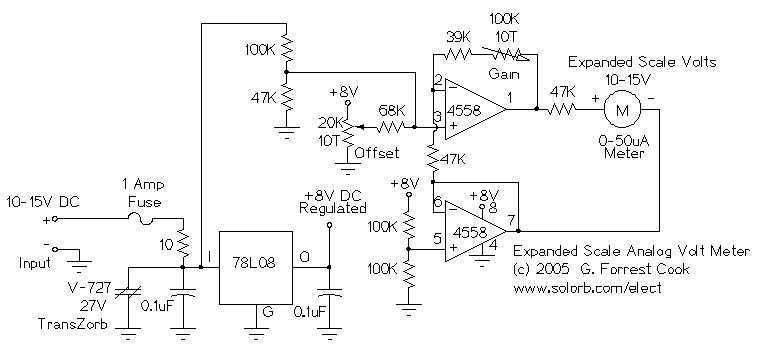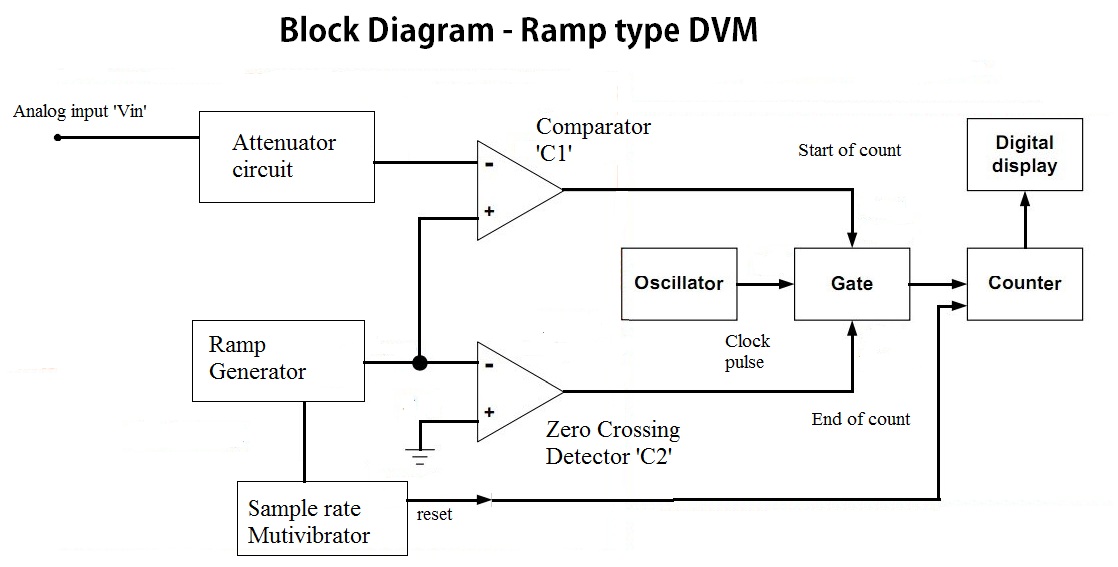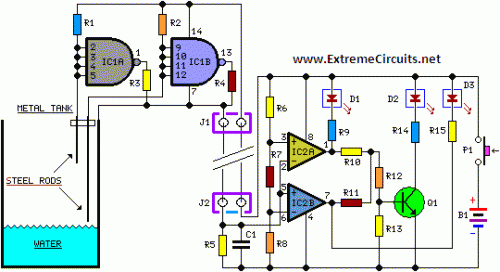
Audio Level Meter
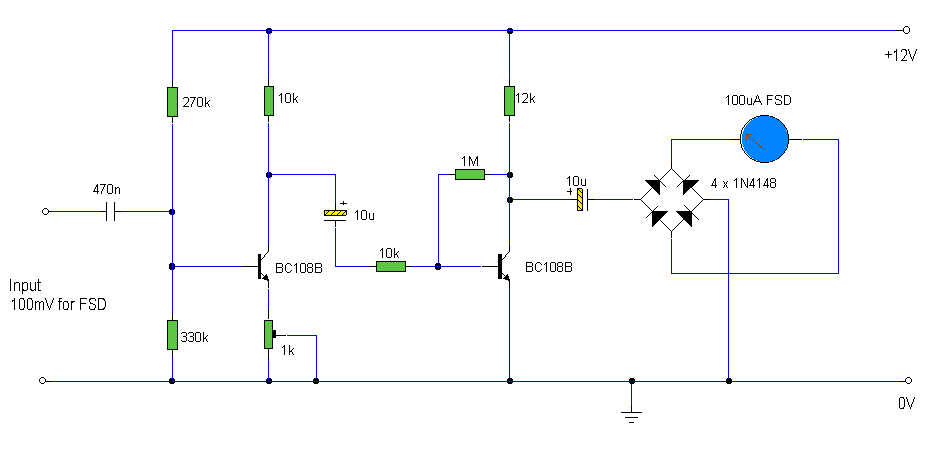
The circuit exhibits a flat frequency response ranging from approximately 20Hz to over 50kHz. The input sensitivity is set at 100mV for full-scale deflection on a 100µA meter. It is constructed using two common emitter amplifiers; the first stage includes a preset resistor that can be adjusted for full-scale deflection. The final stage is biased to operate at around half the supply voltage to achieve maximum AC voltage swing. Audio frequencies are transmitted through a 10µF DC blocking capacitor, while a full-wave bridge rectifier converts the signal into a varying DC voltage. It is important to note that the meter reading reflects instantaneous values and does not provide a "peak" reading. A peak reading audio level meter is also available.
The circuit is designed to accurately measure audio signals across a wide frequency range, making it suitable for various audio applications. The two common emitter amplifiers serve to amplify the input signal, ensuring that even low-level audio signals can be effectively measured. The first amplifier stage's preset resistor allows for fine-tuning of the circuit, ensuring that the meter can be calibrated to achieve full-scale deflection (FSD) at the desired input level.
The biasing of the final amplifier stage at approximately half the supply voltage is a crucial design consideration. This configuration maximizes the AC voltage swing, which is essential for capturing the dynamic range of audio signals without distortion. The inclusion of a 10µF DC blocking capacitor is vital for preventing any DC component from affecting the measurement, allowing only the AC audio signal to pass through to the rectification stage.
The full-wave bridge rectifier is an integral part of the circuit, as it converts the amplified AC signal into a varying DC voltage that can be read by the meter. The instantaneous nature of the meter reading is a key feature, providing real-time feedback on audio levels. However, users should be aware that this design does not capture peak levels, which can be important in certain audio applications. For those requiring peak level measurements, an alternative peak reading audio level meter is suggested.
Overall, this circuit is an effective solution for audio level monitoring, combining simplicity with functionality to meet the needs of audio engineers and technicians.The circuit has a flat frequency response from about 20Hz to well over 50Khz. Input sensitivity is 100mV for a full scale deflection on a 100uA meter. Built on two common emitter amplifiers, the first stage has a preset resistor which may be adjusted for a FSD. The last stage is biased to operate at roughly half the supply voltage for maximum ac v oltage swing. Audio frequencies are passed through the 10u dc blocking capacitor and the full wave bridge rectifier converts the signal to a varying dc voltage. Note that the meter reading is instantaneous and will not provide a "peak" reading. A peak reading audio level meter is also available on this page 🔗 External reference
The circuit is designed to accurately measure audio signals across a wide frequency range, making it suitable for various audio applications. The two common emitter amplifiers serve to amplify the input signal, ensuring that even low-level audio signals can be effectively measured. The first amplifier stage's preset resistor allows for fine-tuning of the circuit, ensuring that the meter can be calibrated to achieve full-scale deflection (FSD) at the desired input level.
The biasing of the final amplifier stage at approximately half the supply voltage is a crucial design consideration. This configuration maximizes the AC voltage swing, which is essential for capturing the dynamic range of audio signals without distortion. The inclusion of a 10µF DC blocking capacitor is vital for preventing any DC component from affecting the measurement, allowing only the AC audio signal to pass through to the rectification stage.
The full-wave bridge rectifier is an integral part of the circuit, as it converts the amplified AC signal into a varying DC voltage that can be read by the meter. The instantaneous nature of the meter reading is a key feature, providing real-time feedback on audio levels. However, users should be aware that this design does not capture peak levels, which can be important in certain audio applications. For those requiring peak level measurements, an alternative peak reading audio level meter is suggested.
Overall, this circuit is an effective solution for audio level monitoring, combining simplicity with functionality to meet the needs of audio engineers and technicians.The circuit has a flat frequency response from about 20Hz to well over 50Khz. Input sensitivity is 100mV for a full scale deflection on a 100uA meter. Built on two common emitter amplifiers, the first stage has a preset resistor which may be adjusted for a FSD. The last stage is biased to operate at roughly half the supply voltage for maximum ac v oltage swing. Audio frequencies are passed through the 10u dc blocking capacitor and the full wave bridge rectifier converts the signal to a varying dc voltage. Note that the meter reading is instantaneous and will not provide a "peak" reading. A peak reading audio level meter is also available on this page 🔗 External reference
